As dogs age, their needs and behaviors change, requiring more attention, care, and understanding from their owners. Senior dogs may not be as energetic as they once were, and they often develop health issues that require specialized care. Providing the best home environment for an aging dog is essential to ensure their comfort, happiness, and health during their golden years. This ultimate guide will walk you through everything you need to know to care for your senior dog at home, covering health, diet, exercise, grooming, and overall well-being.
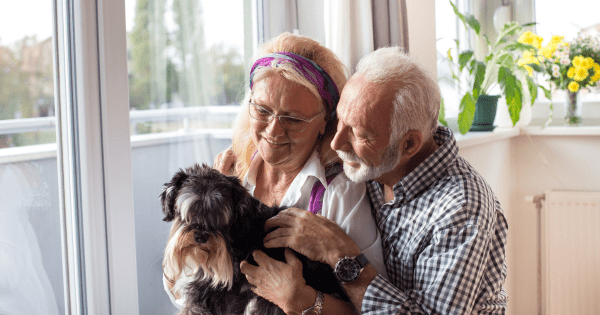
1. Understanding When Your Dog is Considered Senior
The first step in caring for a senior dog is understanding when your dog reaches this stage of life. While it varies by breed and size, most dogs are considered seniors by the age of 7 or 8. However, large breeds like Great Danes may be classified as senior at 6 years, while smaller breeds like Chihuahuas or Pomeranians may not reach this stage until they are 10 or older.
Key Signs of Aging in Dogs:
- Reduced Activity: Your dog may be less interested in play or long walks.
- Gray Hair: Graying around the muzzle is often the first visible sign of aging.
- Joint Stiffness: Senior dogs often show signs of arthritis or general joint discomfort.
- Changes in Weight: Weight gain or loss can indicate age-related health issues.
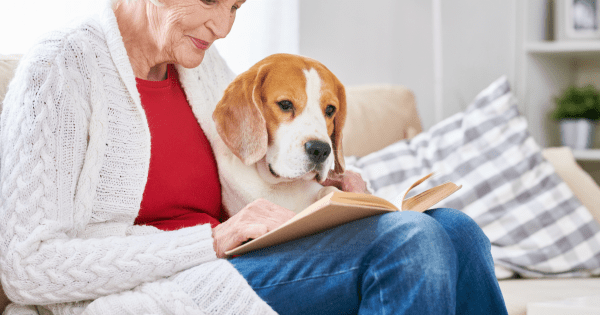
2. Adjusting Your Dog’s Diet
One of the most important factors in caring for a senior dog is ensuring they receive proper nutrition. As dogs age, their metabolism slows down, and their dietary needs change.
Nutritional Needs of Senior Dogs:
- Protein: High-quality protein is crucial for maintaining muscle mass. Ensure your dog’s food contains sufficient levels of lean protein, such as chicken or fish.
- Fiber: Aging dogs often struggle with digestion, so fiber-rich food can help maintain gastrointestinal health.
- Reduced Calories: Older dogs are often less active, so a lower-calorie diet can prevent weight gain, which can exacerbate joint problems.
- Joint Supplements: Consider incorporating supplements like glucosamine and chondroitin into your dog’s diet to support joint health.
You can either switch to a senior dog food formula or consult your veterinarian about customized dietary plans that cater to your dog’s specific needs. Always ensure fresh water is readily available, as older dogs may also have decreased kidney function.
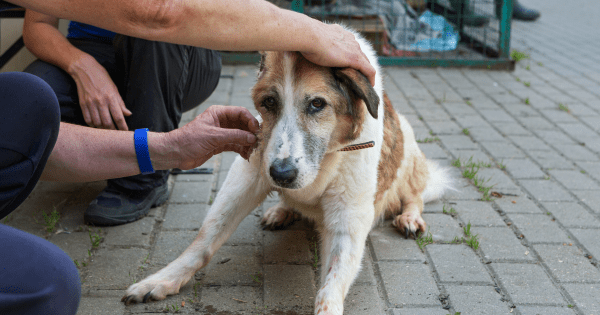
3. Maintaining Physical Activity
While your senior dog may not have the energy they once did, regular exercise is still essential for their health and well-being. Adjust the intensity and duration of physical activity to match your dog’s age and abilities.
Tips for Exercising a Senior Dog:
- Short Walks: Multiple short walks throughout the day are better for senior dogs than one long, strenuous walk.
- Gentle Play: Opt for less physically demanding games, such as slow-paced fetch or gentle tug-of-war.
- Swimming: Swimming is an excellent low-impact exercise that’s easy on aging joints, and many dogs enjoy it.
It’s important to monitor your dog’s response to exercise. If they seem stiff or tired, reduce the activity level and consult your vet if the signs persist. Regular exercise helps keep muscles strong, joints flexible, and prevents obesity.
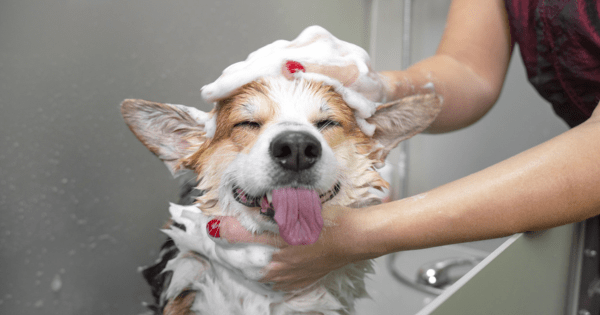
4. Regular Vet Checkups
Routine vet visits are crucial when caring for senior dogs. Older dogs are more prone to various health problems, and early detection can make a significant difference in their quality of life.
What to Expect at Senior Dog Vet Visits:
- Blood Work: Regular blood tests help detect issues like kidney disease, diabetes, or thyroid problems.
- Dental Exams: Oral health is critical in senior dogs, as dental disease can lead to pain and difficulty eating.
- Eye and Ear Checkups: Many older dogs develop cataracts or hearing loss. Monitoring these changes can help you adapt your care accordingly.
- Arthritis Monitoring: Many older dogs suffer from arthritis, and your vet may recommend anti-inflammatory medication, physical therapy, or supplements.
Scheduling bi-annual vet visits is recommended to stay on top of any age-related health issues. Always discuss any behavioral changes, mobility issues, or appetite fluctuations with your vet, as they could indicate underlying problems.
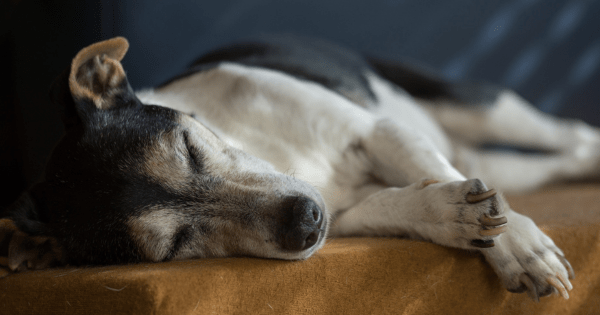
5. Creating a Comfortable Home Environment
Your home should be a safe, comfortable, and accessible place for your senior dog. As dogs age, their mobility decreases, and they may have difficulty navigating stairs or jumping onto furniture.
Tips for Making Your Home Senior Dog-Friendly:
- Orthopedic Beds: Invest in an orthopedic dog bed to provide extra support for achy joints. Memory foam beds can help alleviate pressure points and are especially beneficial for dogs with arthritis.
- Ramps and Steps: If your dog struggles to get onto furniture or into the car, install ramps or pet stairs to make it easier for them.
- Non-Slip Flooring: Hardwood or tile floors can be slippery for senior dogs. Use rugs or non-slip mats to provide better traction, reducing the risk of falls.
- Accessible Water and Food Bowls: Make sure food and water bowls are at an accessible height to prevent your dog from straining their neck while eating or drinking.
By creating a more comfortable and accessible home environment, you help reduce stress and strain on your senior dog’s aging body.
6. Grooming and Hygiene for Senior Dogs
As your dog ages, their grooming needs may change. While some dogs may require more frequent baths, others might need additional care for dry or sensitive skin.
Grooming Tips for Older Dogs:
- Brushing: Regular brushing helps remove dead hair, prevent mats, and stimulate blood flow to the skin. For dogs with arthritis, use a gentle touch, especially around sore joints.
- Bathing: Use a mild, hypoallergenic shampoo designed for sensitive skin. Be mindful of the temperature of the water, as older dogs are more sensitive to hot or cold temperatures.
- Nail Trimming: Senior dogs often exercise less, leading to reduced wear on their nails. Trim their nails regularly to prevent overgrowth, which can cause discomfort or injury.
- Oral Hygiene: Dental care is especially important in senior dogs. Brush their teeth regularly and provide dental treats to prevent plaque buildup and gum disease.
A regular grooming routine also gives you the chance to check for any unusual lumps, bumps, or skin issues that may require veterinary attention.
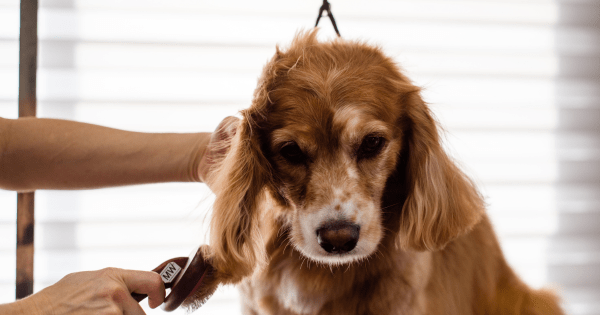
7. Mental Stimulation and Enrichment
Mental stimulation is just as important as physical exercise for senior dogs. Keeping their minds active can help reduce the risk of cognitive decline, which is common in aging pets.
Activities to Keep Your Senior Dog’s Mind Active:
- Puzzle Toys: Interactive toys that challenge your dog to find treats or solve problems can provide hours of mental stimulation.
- Scent Work: Dogs naturally use their noses to explore the world. Engaging them in scent work activities, like hiding treats around the house, can keep their minds sharp.
- Gentle Training: Senior dogs can still learn new tricks! Keep their brains active by teaching them new commands or reinforcing old ones.
Mental enrichment helps prevent boredom and anxiety, which can become more common in older dogs, especially those who may not be as physically active.
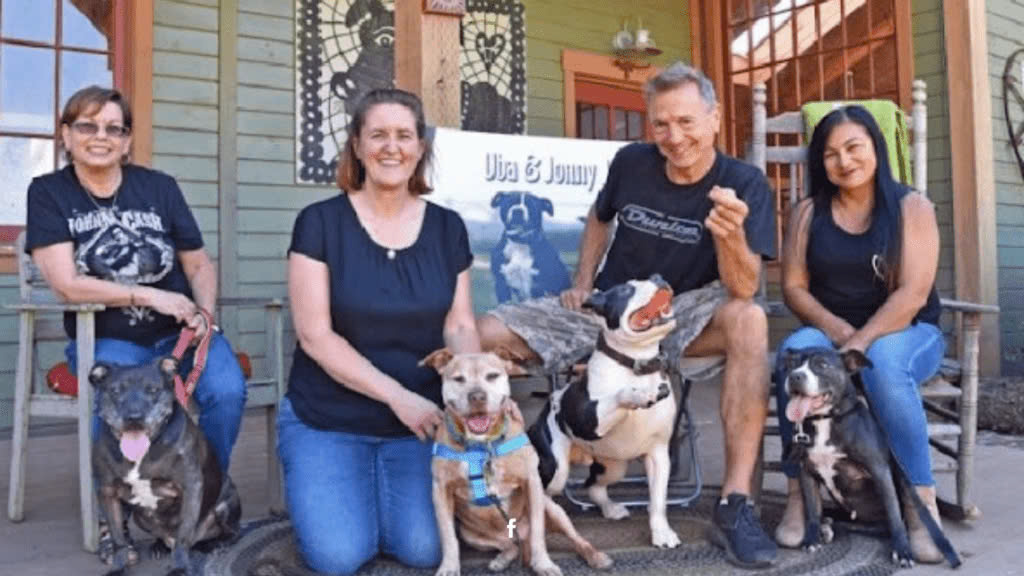
8. Managing Health Conditions
Older dogs are prone to certain health conditions, including arthritis, diabetes, heart disease, and cognitive dysfunction syndrome (canine dementia). Managing these conditions requires close attention to your dog’s needs and working with your vet to create a care plan.
Common Health Issues in Senior Dogs:
- Arthritis: If your dog shows signs of joint pain, such as stiffness, limping, or difficulty moving, your vet may prescribe pain relief, anti-inflammatories, or physical therapy.
- Cognitive Dysfunction: Dogs with cognitive dysfunction may seem confused, anxious, or disoriented. Your vet may recommend supplements or medications to slow the progression of the disease.
- Heart Disease: Older dogs are more susceptible to heart problems. Monitor for signs such as coughing, difficulty breathing, or lethargy, and seek veterinary care if you notice these symptoms.
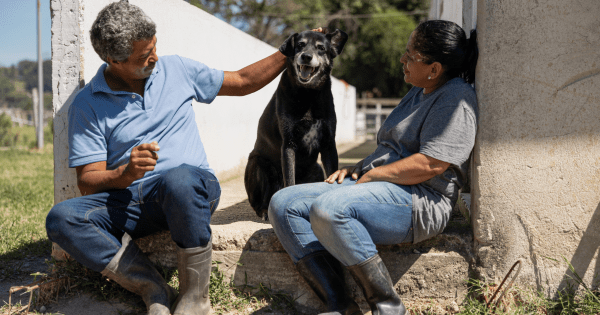
It’s important to follow your vet’s advice and treatment plans to ensure your dog remains comfortable and enjoys a good quality of life despite any age-related health issues.
Caring for a senior dog requires patience, attention, and love. By providing the right diet, regular exercise, mental stimulation, and a comfortable home environment, you can help your aging dog enjoy their golden years in comfort and happiness. Regular vet visits and addressing health issues early will go a long way in ensuring your senior dog remains healthy and happy at home. Whether it’s adjusting their exercise routine or making your home more accessible, these small changes can have a big impact on your senior dog’s quality of life.

Very useful, thank you for the very useful knowledge. I need these experiences.